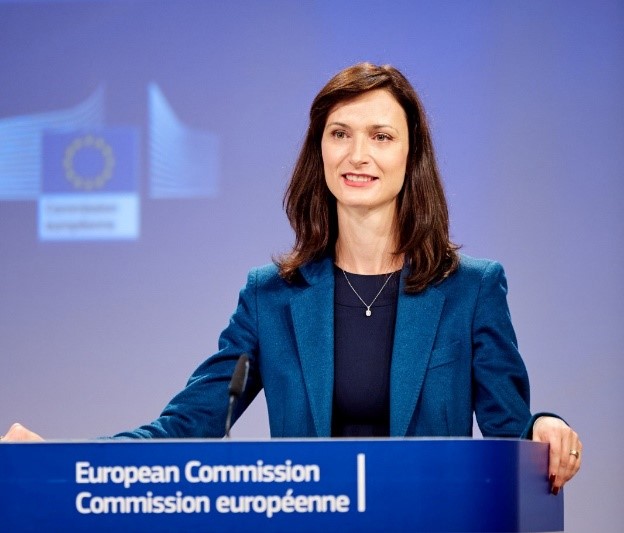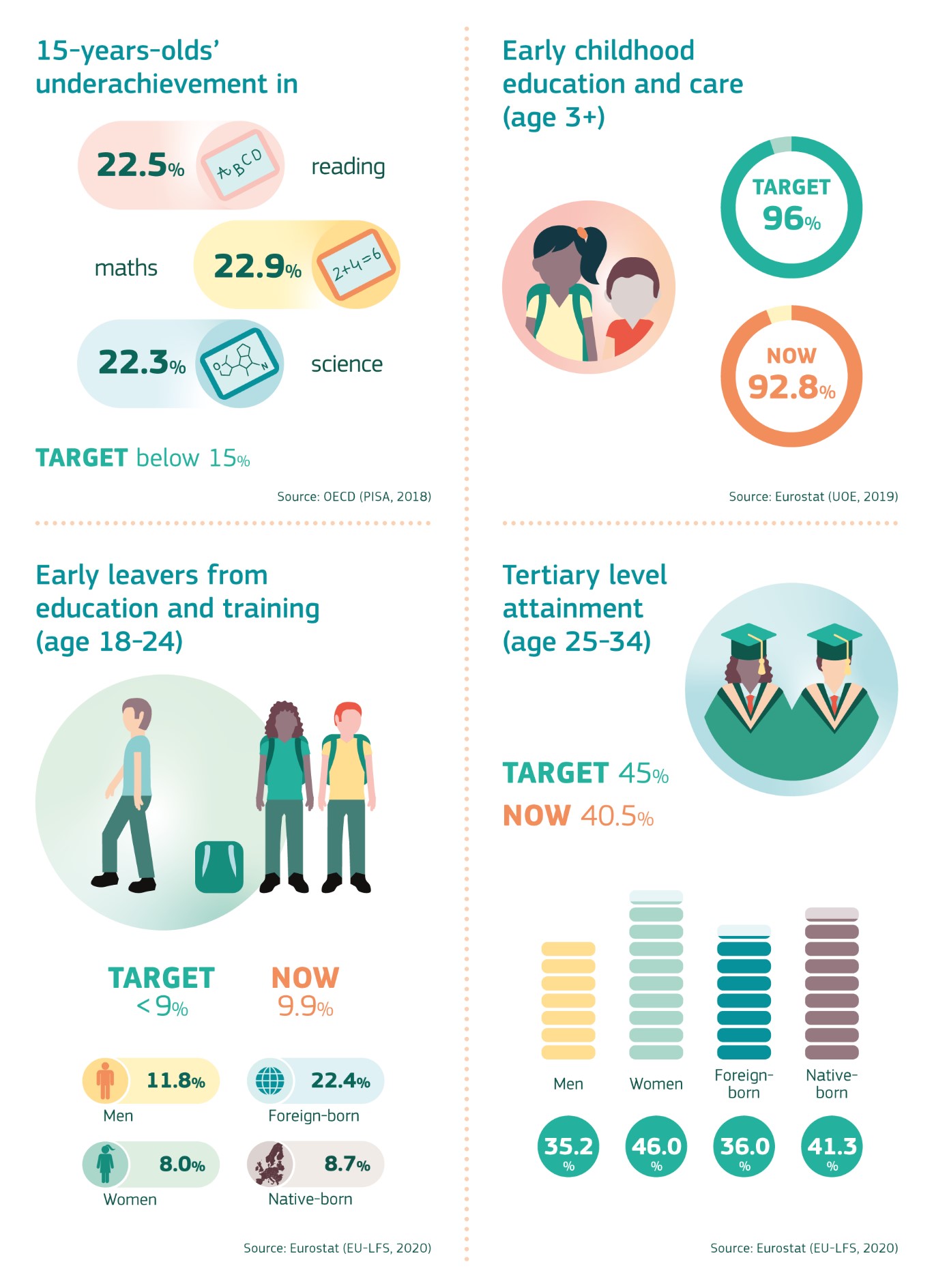
Education and Training Monitor 2021
Foreword

2021 has been a milestone year in education, as schools, training centres and universities across the EU have been progressively resuming operations following the most serious disruption of their activities for many decades. Teachers, students, schools and universities in Europe have proven to be resilient, have successfully mastered digital and pedagogical challenges and have shown their importance as key pillars of our society and economy. The crisis has also revealed the enormous potential for innovation that has been dormant in many education systems. The EU has responded with the adoption of unprecedented initiatives to address the challenges of the pandemic, not least by implementing numerous measures towards building the European Education Area.
The current edition of the Education and Training Monitor examines in depth the well-being of students and teachers. Well-being affects learning outcomes and students’ ability to lead meaningful lives. Teachers need a good working environment which acknowledges their contribution to society and the economy and enables them to perform their duties. Evidence shows that even in countries where there are seemingly robust well-being policies in education, there is considerable room for improvements. This is even more pressing now as the pandemic has led to the deterioration of well-being among students.
As a response to the pandemic, the EU has put together the largest stimulus package ever financed in Europe – NextGenerationEU. Together, this and the EU’s long-term budget for the period 2021-2027 make more than €2 trillion and will help to build a better and more modern Europe. The centrepiece of NextGenerationEU is the Recovery and Resilience Facility. EU countries have presented Recovery and Resilience plans to undertake investments and reforms in order to address the social and economic consequences of the pandemic. Education and skills feature strongly in these plans, demonstrating their importance not only to the recovery process, but also to setting a path to a more prosperous future embracing the green and digital transitions. This is echoed in the EU’s long-term budget with the Erasmus+ programme and through important funding for education under the European Structural and Investment Funds.
This Monitor edition also looks at developing the European Education Area and how Member States stand in relation to the new targets agreed. It is encouraging to see that young people in Europe are better educated than ever before, children’s participation in early childhood education and care has improved considerably and participation rates in higher education have increased massively across the EU. However, still too many leave the education system early and ill-equipped. Although over the past decade the share of early leavers in education and training has steadily decreased, the pandemic risks a reversal of this trend. Especially young people from disadvantaged backgrounds are at risk of not acquiring the qualifications and skills they need.
The pandemic has seriously disrupted Europe’s education and training systems, but the implications of this disruption are not predetermined. Ultimately, it is our common response that will determine how we will emerge from the pandemic. To this end, the Commission will continue working closely with all stakeholders, including governments, experts and international organisations, and is determined to pursue policies that are based on evidence and supported by data and research. This year’s Education and Training Monitor is yet another example in this quest.
Mariya Gabriel
Commissioner for Innovation, Research, Culture, Education and Youth
Infographics on EU-level targets for 2030 in education

